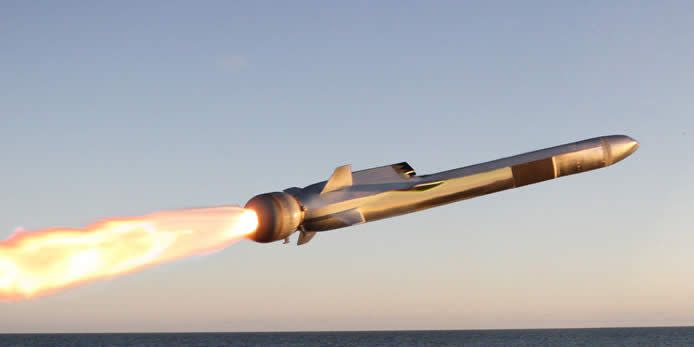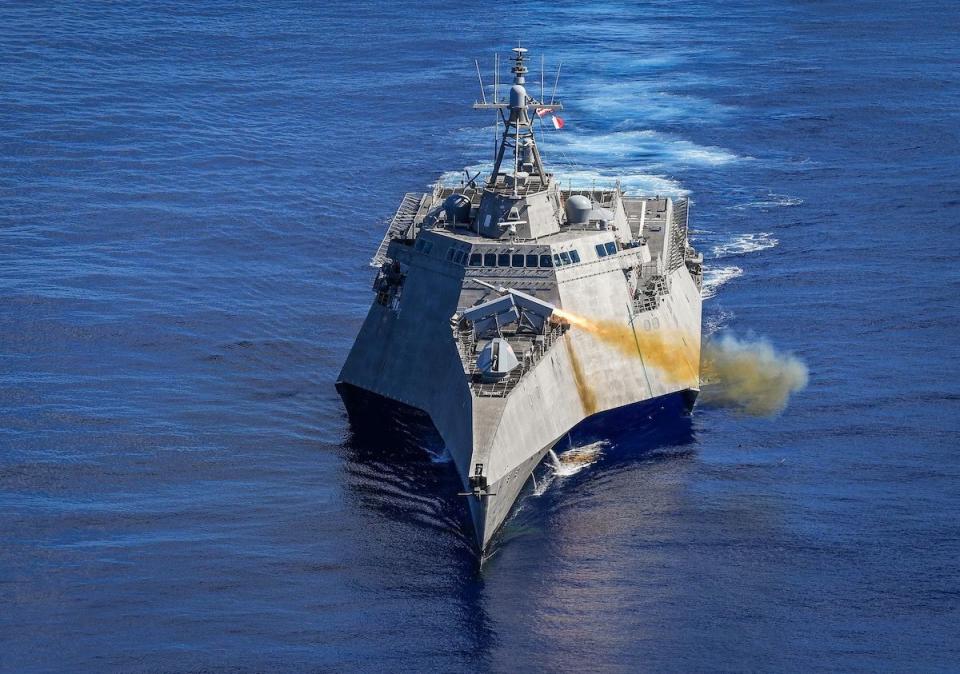The Navy and Marines Want a New Land-Based, Ship-Killing Missile

The U.S. Navy wants an anti-ship missile to protect friendly forces in coastal areas.
The prime candidate is the Naval Strike Missile, already serving on U.S. Navy ships.
The coastal defense mission is something the Pentagon hasn’t done for more than half a century, but is reviving as an option against countries like Russia or China.
The U.S. Navy and Marine Corps want a land-based version of the new Naval Strike Missile. The two services envision using the missile to make adversaries stay away from U.S. and allied-held islands and shorelines, where they could face even better threats to the survival. It’s a modern day take on the old practice of stationing big artillery guns on land prepared to duke it out with enemy ships.
The revival of big power warfare against states like Russia and China has brought major conventional warfare to the center of the Pentagon’s attention. In a future conflict, U.S. forces facing either country would operate off the coast of Europe and Asia, often in seas crowded with the territory of allies and enemies alike allies, territory disputed, and territory that’s changed hands. One way to make sure real estate changes hands in just one direction would be by garrisoning friendly territory with mobile anti-ship missiles.
The missile in question is the Norwegian-designed Naval Strike Missile or NSM. Developed by Kongsberg, the missile is now in production in partnership with U.S. defense giant Raytheon. NSM is an anti-ship cruise missile with a range of more than 100 miles. NSM is currently being fitted to Navy’s new Littoral Combat Ships, giving them the ability to sink ships over the horizon. Here’s the first LCS fitted with the Naval Strike Missile, USS Gabrielle Giffords, firing a missile during exercise Pacific Griffin in October 2019.

NSM is an anti-ship cruise missile. The missile is shot from the deck of a ship or bed of a military truck, using a rocket booster for takeoff. Seconds later the rocket motor falls away and the Microturbo TRI-40 turbojet powers up. NSM flies low, skimming over the wavetops at 30 feet or less, in order to stay off enemy radars. As the missile enters the enemy’s defensive zone, NSM flies a series of evasive maneuvers to avoid incoming fire. On impact, the missile can detonate on contact with the ship, useful for sinking smaller ships, or after penetrating deep into the enemy ship’s interior, a tactic useful against larger ships.
Here’s how land-based missiles would work. In a future conflict, the U.S. Marines land on and occupy an island in the South China Sea. Meanwhile a strong Chinese naval task force arrives, driving away the U.S. Navy and leaving the Marines to fend for themselves. Chinese efforts to land their own force on the island are frustrated by a battery of truck-mounted Naval Strike Missiles, which effectively create a “no-go” zone within 100 miles of the island. The U.S. Navy, having taken on reinforcements, counterattacks and re-establishes contact with the Marines.
Another way land-based NSMs would work is to defend friendly territory from enemy ships while working in concert with friendly ships, aircraft and submarines. Imagine an archipelago of islands dotted with U.S. and Allied forces, under threat by Russian naval forces. By basing NSMs on the friendly islands and creating the same 100-mile buffer, U.S. forces can steer the enemy into deeper water where enemy ships can be targeted by carrier-based aircraft and submarines. The idea is to keep the enemy fleet under constant threat, no matter where it sails, until it is destroyed or decides to go home.
The U.S. Military hasn’t operated a land-based anti-ship missile, or any land-based anti-ship weapon at all for that matter, since World War II. The U.S. Army used to man sets of guns protecting America’s major coastal cities, and the U.S. Marines operated defense battalions designed to protect islands from enemy attack, notably at Wake Island.
The concept was abandoned after V-J day when it was clear the Soviet Union lacked the fleet to threaten the United States and atomic warfare was a greater threat to the homeland.
Source: The Diplomat
You Might Also Like

